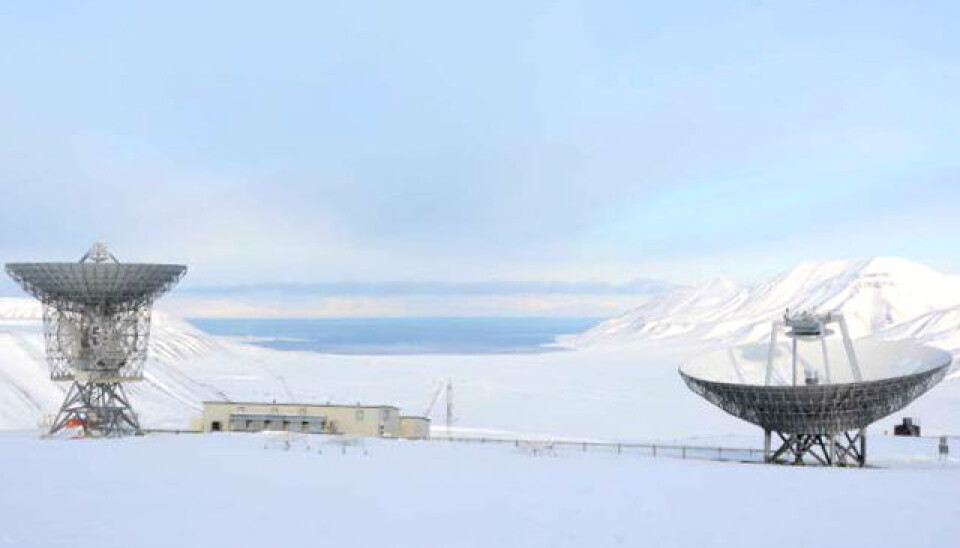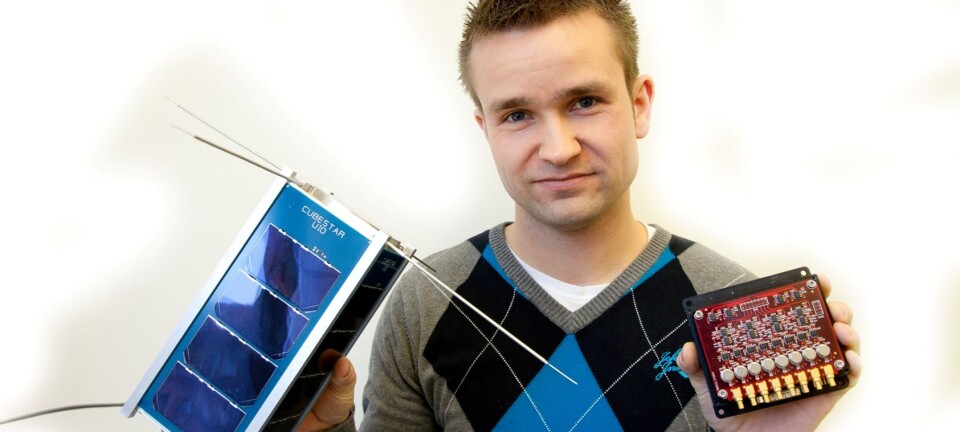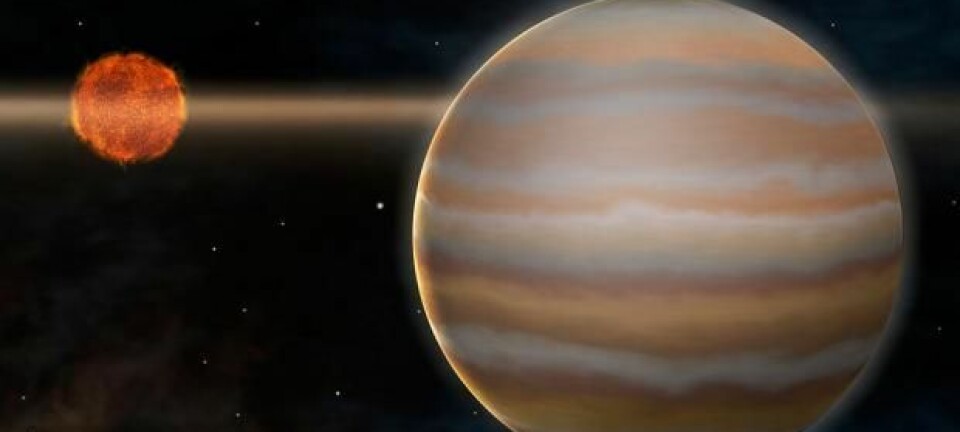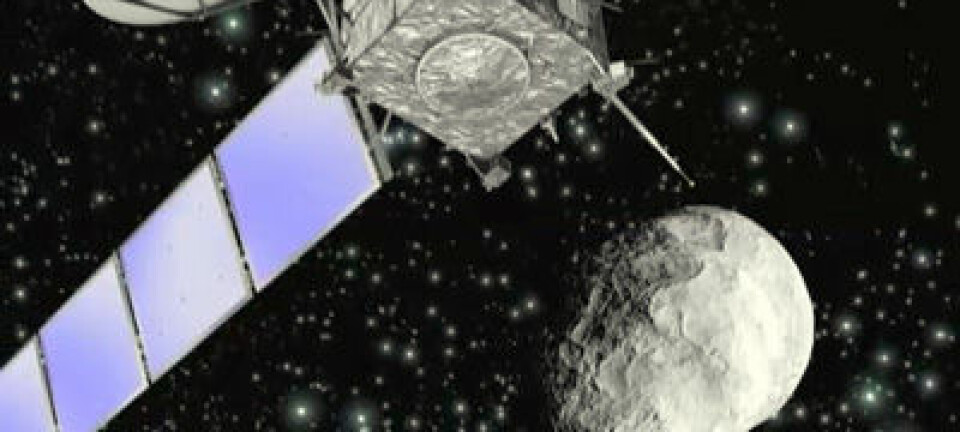This article was produced and financed by University of Bergen

How is earth connected to space?
That is one of the questions the researchers at the Birkeland Centre for Space Science are trying to answer.
"We have become a society that is ever more reliant on satellite communication systems", says Professor Nikolai Østgaard at the Department of Physics and Technology at the University of Bergen (UiB), Norway.
“We become more reliant on space-based technology, we will become more dependent on good space forecasts.”
Earth and the poles
Professor Østgaard is director of the Birkeland Centre for Space Science (BCSS), one of four Norwegian Centres of Excellence (SFF) at UiB. BCSS has set out four prime areas of research:
- Asymmetric Aurora: When and why are the aurora in the two hemispheres asymmetric?
- Dynamic Ionosphere: How do we get beyond the large-scale static picture of the ionosphere?
- Particle Precipitation: What are the effects of particle precipitation on the atmospheric system?
- Gamma-ray flashes: What is the role of energetic particles from thunderstorms in geospace?

Earth is, for the main part, connected to space via the magnetic poles. When electrically charged particles from space bombard our planet, visible light occurs; i.e. aurora borealis in the Northern hemisphere or aurora australis in the Southern hemisphere.
But as these electrically charged particles hit the atmosphere, this can interfere with communication systems. In addition, particle showers from space can lead to power outages and the destruction of transformers on the ground.
Aurora borealis in the Arctic
This is why the BCSS researchers have a particular interest in the ionosphere, a region of the upper atmosphere. It has practical importance because, among other functions, it influences radio propagation, i.e. the behaviour of radio waves, to distant places on Earth.
The ionosphere is at 85 to 600-kilometre altitude. This is where satellites orbit the Earth and also where the aurora becomes visible and creates problems for communication systems.
“Svalbard is the perfect place to study the aurora borealis,” says Professor Dag A. Lorentzen at the University Centre in Svalbard (UNIS), who leads UNIS’s part of BCSS. “We combine data from our base in Svalbard with data from European, American and Norwegian satellites and also Norwegian ground centres.”
Among the most important aurora borealis instruments are the EISCAT Radar, the SPEAR Radar and the optical Kjell Henriksen Observatory, which are all located in Svalbard. The latter is run by the Arctic Geophysics Group at UNIS.
The Svalbard archipelago is located right below the point where the Earth’s magnetic fields converge, and where the electric particles from space enter the atmosphere.
“It has been known for a long time how the aurora borealis evolves. There are, however, a number of unknowns when you look at the processes behind the lights, both when it comes to basic and applied research,” says Lorentzen.
Using space as a lab
This combination of basic and applied research is at the heart of BCSS. The basic research component is about understanding the physical processes in the ionised gas, which is known as plasma.
Around 95 per cent of the known cosmos consists of plasma.
“As researchers we have a unique laboratory right above our heads. Space! Where a number of processes can be studied,” says Lorentzen. “Curiosity is the main motivator for doing basic research.”
The signals between Earth and the communication satellites are transmitted through the plasma in the ionosphere.
“We have seen how some of these signals are interrupted by the atmosphere, and want to attain a better understanding of these disturbances
This is part of the applied research that we do,” Lorentzen explains.
“The aurora borealis is visibleevidence of the numerous electric processes taking place in the upper atmosphere. One of our main interests is to understand the processes before the light becomes visible.”
Hunting for gamma ray blasts
But the electric currents in space are not only influenced by the particle showers hitting Earth.
“On Earth, lightning strikes about 45 times a second, i.e. several million times a day. Satellite pictures show how gamma ray blasts, or GRBs, occur in thunderstorms,” says Nikolai
Østgaard. “ The GRBs are electrically charged particles that travel with the speed of light and in any direction in lightning and thunder.”
In 2010, ten years of raw data of GRBs from the satellite Rhessi were made available. UiB’s Department of Physics and Technology developed a search algorithm which performed better than the algorithms used by the satellite’s owner.
The department found more than twice as many GRBs as were originally reported. Since then, the researchers at BCSS have developed a measuring device that is state of the art to improve the reading of GRBs.
BCSS is involved in designing and building a large X- and gammaray detector to be launched to the International Space Station (ISS) in May 2016. According to Østgaard, the
European Space Agency (ESA) has recently approved the ground model of this instrument, and the group is now building the flight model.
“Lightning discharges function like a battery and create electric fields around Earth. It is, however, little known about what happens when GRBs from Earth or electric particles from space cross through the atmosphere,” says Østgaard. “We move into an electric field and are hit by particles at the speed of light, but without really knowing what the implications of this action are.”
Climate change
One of the hypotheses the BCSS researchers are working on is that particles which seep into the atmosphere influence the chemical composition
of Earth’s weather systems.
“For example, some studies have implied that cosmic radiation makes clouds thicker. This is, however, a very controversial hypothesis,” according to Østgaard.
The energy-rich particles and GRBs crossing the atmosphere may influence the weather locally around the geographical poles, and may thus be of interest for climate scientists as well.
“I want to be careful before stating without doubt that this influences the climate. There are, however, many unknowns in the relationship between space and climate change.
And as long as this has not been researched, we cannot say anything without reasonable doubt,” says Nikolai Østgaard.

































